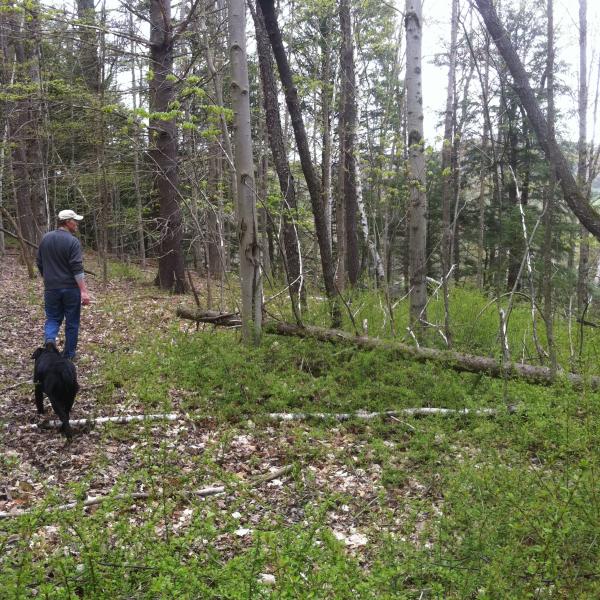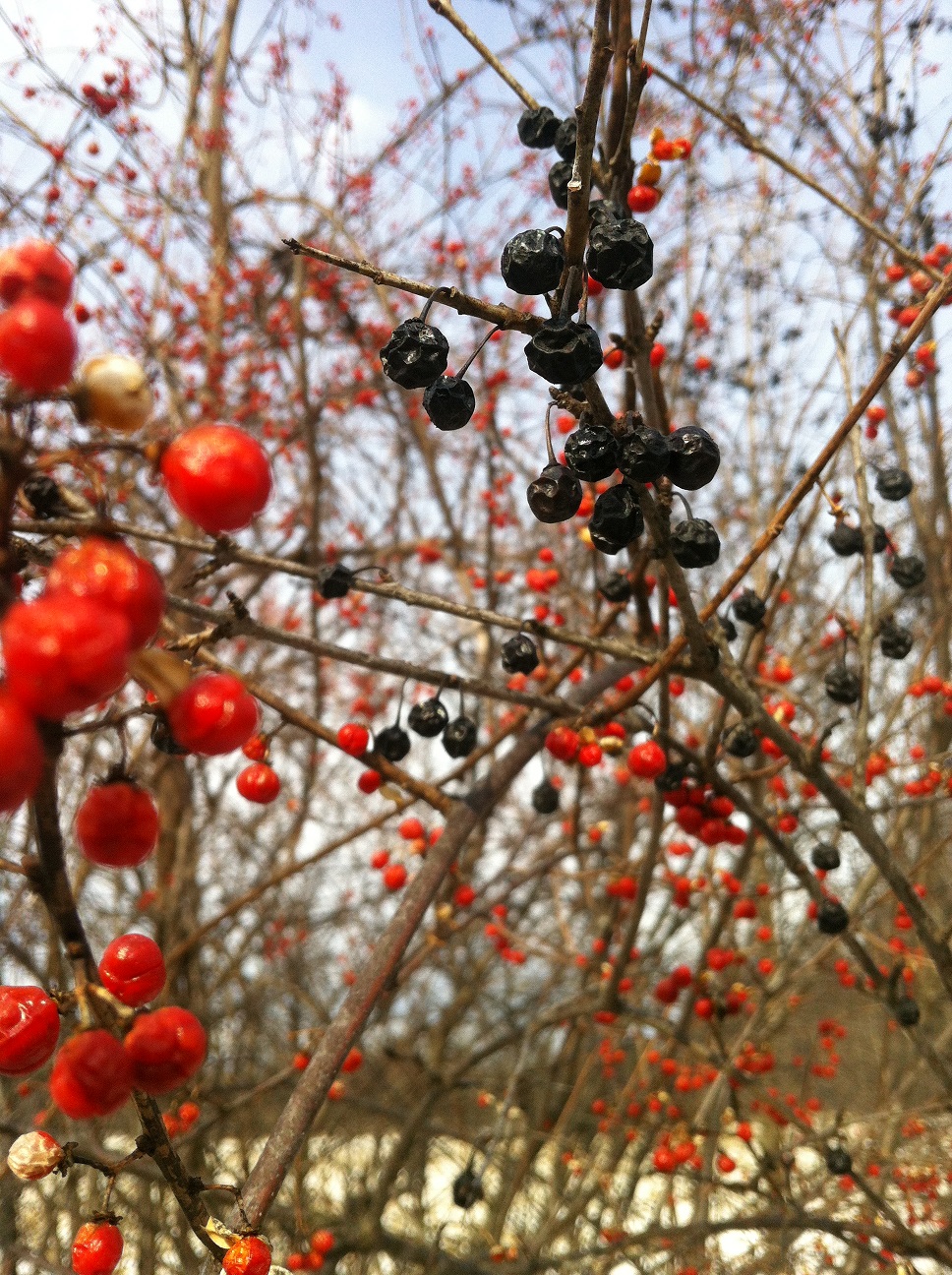
Up here in Chittenden County, we have our share of invasive exotic plant species. They seem to spring from every hedgerow, every garden, every road, and powerline right-of way. I see them most commonly in the fragmented landscapes in and around developed areas, but also frequently in formerly agricultural areas that have recently succeeded to forest. Increasingly, I see invasive plants creeping insidiously into the understory of interior forests, where reason would suggest they would not be successful. While invasives anywhere are a problem for the way that they displace native species, disrupt ecosystem function, and generally make a nuisance out of themselves, this last example is where we in the forest management community really start to worry about them. The problem is compounded by a problem of education; more often than not, when I point out a little honeysuckle or buckthorn to a landowner, I am showing it to them for the first time. Suddenly, I have transformed this little green plant, seemly like all the rest, into an enemy of epic proportions, and I am telling a landowner that their forest has a serious problem. This can seem overwhelming and frustrating so I thought that I would break down the steps in our management of these species so that any landowner with this issue can have a clear path forward.

Fruit of oriental bittersweet and common buckthorn remain after leaf drop in an abandon pasture in Shelburne
From a management perspective, the first and most important step is to identify these species - we can’t fight what we can’t see. However, the list of potential invaders in our yards and woodlots is long enough that learning to identify these species can be intimidating. To remedy this, I usually give landowners a “shortlist” of invasives that they are most likely to see in their area. I tell them to look on VTInvasives.org, use other online and print resources to identify these species, and to bring fact sheets and copies of these resources out in the woods with them. The five species I start with are: shrub honeysuckle (Lonicera spp.), common buckthorn (Rhamnus cathartica), glossy buckthorn (Frangula alnus), Japanese barberry (Berberis spp.), and multi-flora rose (Rosa multiflora). Once you’ve got those down, take on another five: Japanese knotweed (Fallopia japonica), burning bush (Euonymous alatus), oriental bittersweet (Celastrus orbiculatus), common reed (Phragmites sp.) and poison parsnip (Pastinaca sativa). Narrowing down the field like this helps to concentrate our identification skills on which invasives are most likely to be present on our land.
Once you know what you have and where it is, we can make a plan for its removal. This is the tricky part. Your first thought should always be to consider if mechanical removal, the physical removal of these plants using our hands and hand tools, is feasible. If you have a few plants, and they are small, you might be able to get away with pulling out these invaders by hand. If you do this, make sure that you pull out the entire root system and hang them in a nearby tree to dry out (all of these plants are very good at sprouting from even a small fragment of root). If some of the plants are too big to hand-pull, you can try cutting them with a hand saw, brushsaw, or chainsaw. However, be warned that all of these exotic invasive species will sprout prolifically following cutting. For cutting to be successful, you will need to cut multiple times a year for several years. In the case of Japanese knotweed, it will take cutting every summer month for 5 years or more to achieve even a modicum of control. For this reason, the key to mechanical removal is to be realistic. If the plants are too big or too many, or you don’t have time to spend removing them, you will never be able to control them this way, and you’ll end up frustrated, having made no difference in the population of these species on your property.
In most advanced infestations, from forest understories to hedgerows and old farm fields, you’ll need to use chemical removal - the application of herbicide - if you ever wish to control them. This is a tough sell with most landowners who want to avoid applying chemicals on their land at all costs. While I understand this sentiment, I have come to see herbicide as an important tool in facilitating the rehabilitation of unhealthy forests. Infestations of exotic invasive plant species put forested ecosystems’ abilities to grow, regenerate, and respond to disturbance in the long term in jeopardy. They lower species diversity and provide fewer opportunities and benefits for wildlife than native species. Furthermore, what you’ll learn when you start trying to remove them is that they are really impressive plants. Every one of them is skilled at growing, reproducing, and persisting, even while being cut, pulled, and otherwise annoyed. I often say that in most cases mechanical treatment just “makes them mad.”
Herbicide can be applied very conscientiously and thoughtfully, either to the cut surface of stumps or as a low-intensity foliar spray, applied to the leaves of the target plants. I have seen both of these treatments executed with very little to no mortality of native plants, even those located inches from the target plant. You can buy herbicide formulations in bulk at most hardware or garden stores and apply it yourself, or you can hire someone to treat your land for you. Most foresters, landscapers, and arborists either do invasive species control themselves or can direct you to someone who does. If you choose to apply herbicide on your own, pay careful attention to the herbicide’s label for safety and application information, and do some research on what equipment to use and when to apply to your target species. Herbicide application can be expensive, but if you have a forest management plan you can apply to the NRCS’s Environmental Quality Incentives Program (EQIP), for help funding your invasive species treatment project.
It is important to recognize that even if we get out there and pull, cut, or treat all the invasive exotic plants on our land, we will never be totally free of them. Birds will drop seed from plants on other properties, or they will be spread onto our land by some other means. These prescribed steps of identification, assessment, and treatment are not a path with an endpoint, but rather a cycle that must occur continuously into the indefinite future. For this reason, in the forestry community, we no longer use the term “eradication” to refer to our treatment of these species. Rather, we talk about “control,” which is the maintenance of the populations of these species at a level where we can hand-pull them as they establish. This is why the identification of these species, the first step in this process, is so important. For those of us unfamiliar with these species, let’s start there.
Article and photo credit: Ethan Tapper, Chittenden County Forester